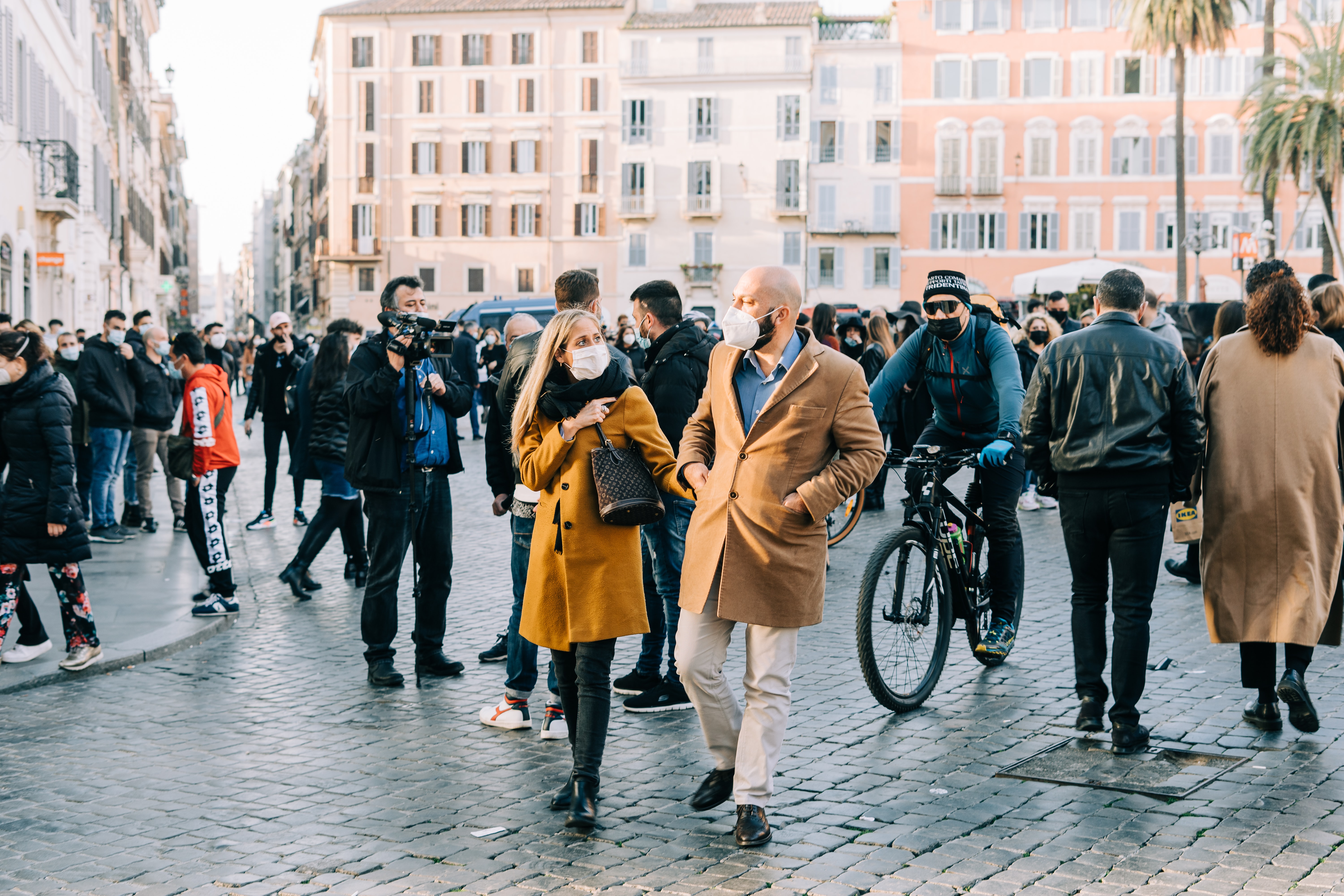
We continue to share with our readers the most interesting, according to NES professors, graduation theses of NES students. Anastasia Khromenko from the NES-HSE Joint Bachelor of Arts in Economics Program, who had Professor Shlomo Weber as her academic adviser, talks about her research.
In the social sciences, there is such a notion as "social capital." Briefly, we can define social capital as a network of a person's social connections and relationships, and their quality. The higher it is, the stronger the relationships between people are, the more often people tend to trust each other, and the greater social responsibility they demonstrate.
These characteristics of society strongly influence the patterns of people's behavior. In particular, it is interesting to see how social capital affected mobility during the first months of the recent pandemic. During this period, the Covid outbreak and isolation requirements have not yet had a significant impact on social ties. Therefore, we can try to understand to what extent social capital helped people to solve the problem of increasing morbidity with the help of voluntary self-isolation.
It turns out that research at different levels shows different results. Observations for the US, Italy and Germany demonstrate the positive effect of social capital on self-isolation in the first months since the beginning of the pandemic. The mechanism of this seems quite natural: people living in more cohesive communities feel more responsible for protecting others' lives, and also have more frequent and closer contacts with other people. This increases their incentives to protect both themselves and others, so they stay at home more often.
Meanwhile, research by Toker Doganoglu and Emre Ozdenoren at the national level demonstrates a positive correlation between the level of social capital and people's mobility at the beginning of the pandemic. To explain this, the scholars provide a theoretical model in which people can wear face masks and stay at home to protect themselves against the virus. Doganoglu and Ozdenoren conclude that higher social capital helps people maintain the norm of wearing face masks in public places. This makes it safer for everybody to leave the house. Therefore, people in societies with high social capital can afford to abandon self-isolation more often.
It may appear that in the latter case the concepts of social capital and conformity are confused. An individual's conformity is what makes him or her adapt to social norms in order not to feel "different". Since wearing a face mask is a public act, deviation from this social norm imposes inner emotional costs and pushes the person to comply with the norm. For example, when visiting my hometown, I continued to wear a face mask out of habit, but felt some pressure from society, due to the fact that the masks were not worn there as much as in Moscow.
It should be noted that the effect of social capital works through the high sense of responsibility, and not through the desire to "be like everyone else." However, as Shalom Schwartz emphasizes in his paper, conformity and social capital are positively correlated. And this fact could lead to statistically positive relationship between social capital and mobility, while there may be no positive causal relationship.
In my research, I develop a model of social interaction in a pandemic, including in it social capital and conformity. Agents can choose whether they want to stay at home or leave it. In the second case, they need to decide whether they wear a face mask or not. After all agents make their choice, we can evaluate the utility of all people. According to the model, social capital leads to an individual’s more intense suffering from the fact of infection of his or her fellow citizens, and conformity increases the moral costs of deviation from the social norm of wearing a face mask.
The natural outcome is that in societies with a higher level of conformity people wear face masks more often, and higher social capital increases the proportion of people who choose to stay at home. The model also allowed us to assess the dependence of the optimal government response on the level of social conformity. By including in the model the possibility of a lockdown, I deduced that higher conformity in a society can replace some anti-covid measures or provide for their milder version. Indeed, if people can independently maintain a strict observance of the face mask regime, then the government can allow greater freedom of movement to the population.
By including conformity in the research, I managed to bring two effects of independent social characteristics on self-isolation to a common denominator. The established positive correlation between social capital and mobility simply reflected the effect of conformity, while according to other research, social capital continued to push people to observe voluntary self-isolation.
This highlights the importance of studying people’s conformity. Academic research on this topic is not as developed as, for example, on social capital. Thus, for the empirical part of my work, I had to elaborate on my own how to assess the level of conformity in various countries. Our desire "to be like everyone else" can greatly distort our behavior and consolidate useful or harmful social norms. Therefore, analyzing the effect of conformity on our behavior and the creation of a general methodology for measuring it can help us find ways to manage social behavior more effectively and increase understanding of its mechanisms.